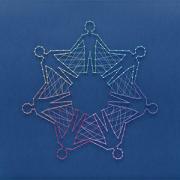CUTTER BUSINESS TECHNOLOGY JOURNAL VOL. 33, NO. 10

Nicole D. Price focuses on technical professionals and their underused skills, knowledge, and insights when tackling diversity, equity, and inclusion efforts. She offers seven specific attributes of technical professionals and discusses how those attributes are well suited for this challenging work. Among them are logic and reason, reliance on evidence-based research for problem solving, the ability to imagine a better future, and healthy conflict.
When employers embark on diversity and inclusion efforts as a result of racially charged national events, the intent is to focus on racial challenges. But, typically, labels employers use for these efforts can cause confusion. While diversity and inclusion are important, they are not the same as racial equity.1 Regardless of the terms used, including technical professionals early in the discussions could bring perspectives that can impact the work climate in practical ways. Technical professionals often have skills and knowledge that can be critical to tackling deeply embedded, and sometimes hidden, policies and practices that create division and inequity. I have worked with hundreds of organizations large and small, and it is a rarity that people in technical roles are considered integral to the diversity, equity, and inclusion efforts.
From the biased lens of a technical professional — me — let’s unpack how organizations can mitigate challenges, great and small, to diversity, equity, and inclusion initiatives. In this article, we explore some of the top ways technical professionals can add to the diversity, equity, and inclusion discussion.
Benefits of the Technical Perspective
We ... Are Logical and Reasonable
It would be ridiculous to think that technical professionals don’t have prejudices and biases. Us techies are just like all other humans; however, we are more likely to use logic and reason when making decisions rather than allow our emotions to move us toward a certain path.2
Exclusionary and inequitable practices are never universal. There are always exceptions to the rules. But if we collectively desire to resolve the primary issues of discrimination, exclusion, and bias, we must logically respond to the patterns we observe, not the outliers.
Logical and reasonable people notice patterns and avoid making decisions based solely on outliers or random exceptions. This ability to engage in objective analysis is important when working toward diversity, equity, and inclusion. When patterns of discrimination are clear, technical professionals are great at identifying the gaps without getting derailed.
We ... Measure Things
Often, the path toward diversity, equity, and inclusion is long. When embarking on systemic change, incremental progress can seem inconsequential. Along the way, people need to observe incremental progress to avoid discouragement when it comes to the gravity of the work. That means someone has to document the baseline, set goals, track lead and lag metrics, and so forth. Techies are great at this!
Technical professionals are also great at identifying and measuring disparities. Systems of inequity don’t uphold themselves; people uphold these systems, and inequities can always be traced back to practices, norms, policies, and laws. Thus, we must direct energy and effort toward dismantling systems that work against our goal of creating more diverse, equitable, and inclusive cultures. From all the time techies spend on process improvement, they know how to make the issue more about the polices, practices, and so forth, and not personalize these larger challenges by making them solely about people and their behaviors. Therefore, we must engage more technically minded people in the process so that we can redirect energy from the personal dimensions of diversity, equity, and inclusion toward the institutional dimensions.
We ... Realize Our Way Is Not the Only Way and Lean on Evidence-Based Research to Solve Problems
Because technical teams are largely cross-functional, we have lots of experience creating teams that have varied skills, talent, and ability so that our teams are smarter. The objective lens of the technical professional makes space for objective analysis of data rather than an overt focus on “What would I do if it were me?” Everyone has an opinion on diversity, equity, and inclusion, but not everyone has informed opinions. You can’t fix what you don’t fully understand.
When we ask people to face hard truths about topics such as implicit bias, people need to focus on the facts related to the history of exclusion and inequity. Technical professionals know to ask “why” five times — five different ways to get at the root of the issues — before deciding on a way forward. Why is it that women can lead certain countries and not others? Why is it that overweight people are universally thought to be lazy? Why do organizations have special words like “qualified diverse talent” added to job vacancies when looking for unconventional talent? It is the technical professional who will notice the patterns in historical and current data, understand the magnitude of inequities, and work to close them.
We ... Value Formal Training
Training accounts for approximately 10% of learning.3 Ten percent is hardly sufficient to meet the urgent need to increase our intellectual horsepower specifically related to race and racial equity. Employers that implement diversity, equity, and inclusion training programs have the best intentions, but the impact of some of their immediate actions sometimes results in lying, crying, and denying.
I maintain that we can illustrate the basics of the problem with a math analogy. No one skips basic math and enrolls in calculus; understanding basic math concepts is foundational to succeeding in calculus. Race is like calculus; most people have entered into and gone through school, work, love, and life without any formal training on race. However, many in leadership assume that people have the foundational skills necessary to understand race and racial equity when they do not. Therefore, we must recognize and close that learning gap if we are to make sustainable progress. It helps to start with the basics like what the difference is between a fact and an opinion or how equality differs from equity. I have engaged in the Myers-Briggs Type Indicator for years, and it is challenging to get people to stop discriminating behavior based on personality. Imagine how difficult it is to get them to stop discriminating based on things like ability, wealth, educational level, gender, sexual orientation. Technical professionals are great at creating learning methodologies on advancing topics.
We ... Operate Within Our Licensure
We know we are not licensed therapists. Therefore, we don’t try to act as though we are. Listening sessions about diversity, equity, and inclusion often result in an increased number of grievances and complaints, not a reduced number. One major reason is because people who have been discriminated against and excluded experience trauma. Another challenge is that some people who decide to speak up (in oppressed groups and in privileged groups) aren’t always informed on the issues causing additional trauma and harm. Technical professionals understand that there are professionals who handle trauma and avoid unearthing that trauma at work unless we can provide professional support for our employees who may need it. What we do instead is invite people to look solidly at the reasons behind trauma. Techies solve problems by investigating and eliminating the source of the problem. We address the problems within policies and procedures that historically lead to people experiencing trauma. We leave trauma support to the trained professionals.
We ... Are Familiar with Imagining a Better Future
Who imagined a cell phone and then created it? Who else imagines social media platforms and then creates them? Who imagines self-driving cars and makes that dream a reality? Technical professionals! We specialize in creating new worlds that no one else can fathom at first. We have brought new creations into being in seemingly unimportant areas (e.g., the Cosmic apple, a newly developed and better-tasting apple4) but also in life-saving areas, such as vaccine development. Moreover, having diversity on our teams is proven to make us smarter, better, and stronger.5 We have no idea which of the world’s problems could be resolved if everyone belonged at the table (not just invited to the table) and was able to contribute equally.
We ... Fight
Technical professionals understand that when the stakes are high, no idea is “safe.” We insist on candor and openness because we know that when an issue arises and people don’t speak up, lives are literally at stake. Safe place simply means that no one is ever going to be working against people. Technical professionals will interrogate ideas (not people) that are prejudiced, discriminatory, and/or exclusionary. We know that healthy conflict helps us move toward a more equitable world.
It’s a major red flag if your communications department is more involved in addressing diversity, equity, and inclusion issues than are your technical and leadership departments.6 These are the people who will use qualitative, quantitative, and empirical data to identify where issues of exclusion, systemic oppression, and racism lie. Wherever there are disparities, it is the technical professional who will be the one to stop arguing against the existence of the problem and help us start redirecting energy and emotions toward driving change.
Why aren’t technical professionals more involved in identifying and addressing diversity, equity, and inclusion issues? Well, they typically are not asked, and I’m not so certain techies are aware of the value they bring. What I know for sure is that no one can resolve diversity, equity, and inclusion issues alone, and something is definitely missing when techies are not part of the discussions and planning. Let’s change that!
References
1“What Is Racial Equity?” Center for Social Inclusion, 2017.
2“Job Compatibility for the 16 Myers-Briggs Personality Types (Chart Included).” Indeed, 24 January 2020.
3“The 70-20-10 Model for Learning and Development.” Training Industry, 28 January 2014.
4“Introducing the Cosmic Crisp, the Big Apple Growers Are Banking On.” NBC News, 23 November 2019.
5See, for example: Robergea, Marie-Élène, and Rolk van Dick. “Recognizing the Benefits of Diversity: When and How Does Diversity Increase Group Performance?” Human Resource Management Review, Vol. 20, No. 4, 2010; Fine, Cordelia, and Victor Sojo. “Women’s Value: Beyond the Business Case for Diversity and Inclusion.” The Lancet, Vol. 393, No. 10171, February 2019; Morley, Tracy. “Making the Business Case for Diversity and Inclusion: Short Case Studies and Research Papers that Demonstrate Best Practice in HR.” Strategic HR Review, Vol. 17, No. 1, February 2018; and Herring, Cedric. “Does Diversity Pay?: Race, Gender, and the Business Case for Diversity.” American Sociological Review, Vol. 74, No. 2, April 2009.
6Lencioni, Patrick. The Five Dysfunctions of a Team. Jossey-Bass, 2002.



